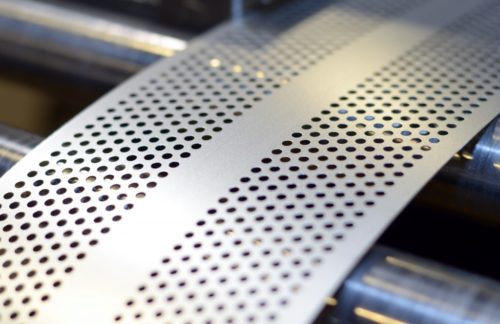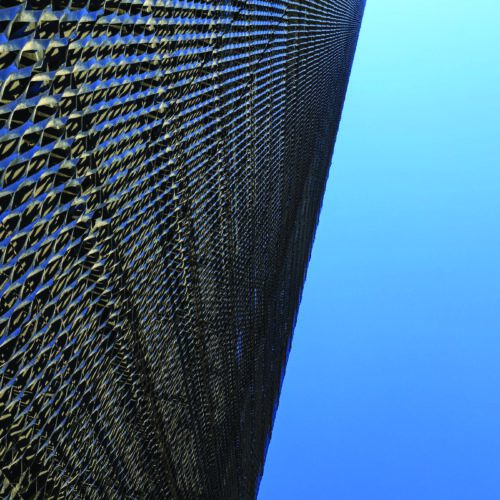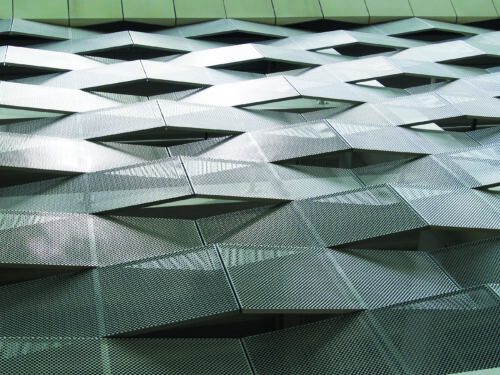 Metals have many inherent qualities, including strength, malleability, and durability, that make them ideal building components. Recently, architects and contractors have begun adopting new metal solutions to improve building performance, aesthetics, and safety. Two of the most common techniques, perforated and expanded metal, are particularly prized for their high strength, reliability, and flexibility, and their ability to provide high levels of security make them particularly beneficial for new or rehabbed buildings.
Metals have many inherent qualities, including strength, malleability, and durability, that make them ideal building components. Recently, architects and contractors have begun adopting new metal solutions to improve building performance, aesthetics, and safety. Two of the most common techniques, perforated and expanded metal, are particularly prized for their high strength, reliability, and flexibility, and their ability to provide high levels of security make them particularly beneficial for new or rehabbed buildings.
Below, we’ve outlined some of the main uses of perforated and expanded metals, as well as some qualitative benefits they’ll bring to your next construction project.
Metal Solutions
Perforated and expanded metals can form a variety of innovative products, composites, and sustainable design solutions that will perform well across a range of climates and building types. Here are some of these metals’ most common applications:
Ceiling Ducts
Perforated metals evenly distribute air in ceiling ducts and reduce excessive noise typical to HVAC systems. Many companies provide a wide selection of architectural perforated metal products to be considered for each construction project.
 Security Mesh inside Walls, Ceilings, and Floors
Security Mesh inside Walls, Ceilings, and Floors
Barrier and security fence manufacturers use expanded metals to create meshes for use on walls, ceilings, or floors. Because of their inherent strength, expanded metal barrier meshes can protect against break-ins and break-outs, ensuring the safety of facilities and the people using them.
Stairs, Railings, and Arches
High-performance metals allow for complex, intricate designs in stairs, railings, and arches while meeting safety and durability requirements. By incorporating metal solutions into their plans, architects can design more creative and competitive solutions and incorporate delicacy into their design without sacrificing function.
Siding and Roofing
Because of their malleability, you can easily form perforated and expanded metals into a variety of shapes. Consequently, using these metals for your roofing or siding can be an extremely affordable, versatile, and effective solution, especially in high–wind uplift conditions.
Other Uses
Expanded and perforated metals also work well in architectural fencing, facades, lighting, doors, gates, lockers, office dividers, privacy screens, sunshades, sunscreens, windows, and skylight guards.
Benefits of Metal Solutions in Architecture
 Making use of innovative new metal solutions allows for trade collaboration in the architectural industry. The large range of customization capabilities for perforated and expanded metals allows for a great deal of collaboration to take place between suppliers and clients. Because these metals can come in so many shapes, forms, and abilities, they offer limitless possibilities.
Making use of innovative new metal solutions allows for trade collaboration in the architectural industry. The large range of customization capabilities for perforated and expanded metals allows for a great deal of collaboration to take place between suppliers and clients. Because these metals can come in so many shapes, forms, and abilities, they offer limitless possibilities.
High-performance materials such as expanded and perforated metals also boost your buildings’ integrity and longevity. Their ability to easily form and conform to new applications enables these metals to provide solutions to previously hard-to-solve problems.
Finally, implementing new metal-forming techniques helps architects meet or exceed building code requirements for complex issues such as water penetration, uplift ratings, fire protection, and seismic and structural performance.
Use Perforated and Expanded Metals in Your Next Construction Project
New metal-forming techniques are taking the market by storm. Adopting perforated and expanded metals for your next architectural project will provide the same degree of security and metal coverage as other techniques, but will consume fewer resources while doing so








 Security Mesh inside Walls, Ceilings, and Floors
Security Mesh inside Walls, Ceilings, and Floors
Comments are closed